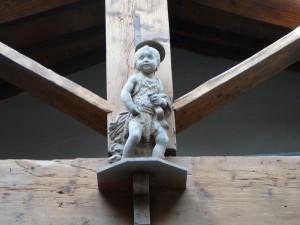The Florentine Duomo, Santa Maria del Fiore (St. Mary of the Flower) recently celebrated the 712th anniversary of the laying of the first stone on September 8, 1296. The day was marked by the ringing of the bells in Giotto’s campanile, the annual opening of the mid-level terrace to visitors, and the open-house of the La Bottega dell’Opera di Santa Maria del Fiore — the fix-it shop of the cathedral.
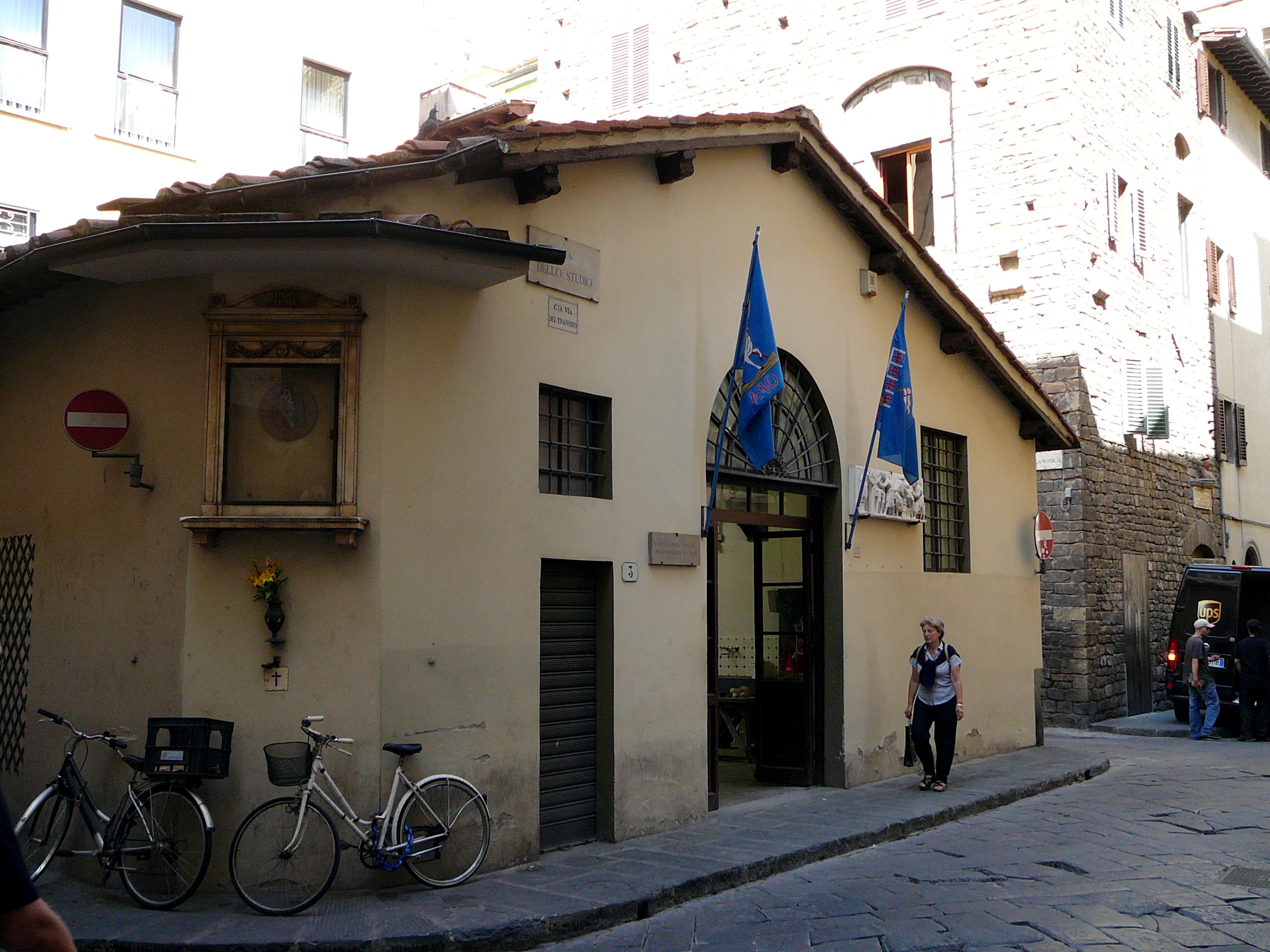
On Via dello Studio, half a block from Piazza del Duomo, Claudio, a stone-cutter, works with about ten other men to keep the Duomo in repair. Usually passersby look in through the dusty windows to see a large workshop with machines found in every modern crafts workshop – a milling machine, a circular saw – along with manual tools forged in steel, some a few centuries old – a stonemason’s chisel, gravers, hammers and the same marble drills used by Renaissance artists. On September 8, 2008, visitors could enter and look around.
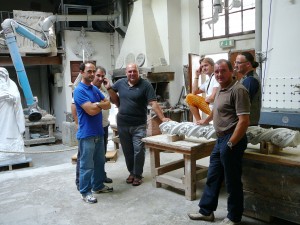
This is the third location of the workshop. During Michelangelo’s time it was located in a courtyard of the building behind the aspe of the Duomo – now the Museo dell’Opera del Duomo. It was in this same courtyard where the David was carved. In the 1700s, the old courtyard was abandoned and the craftsmen were relocated to a rotunda still found in Piazza delle Pallottole – now the Sasso di Dante trattoria. In the mid-1800s, the workshop was moved to its present location.
On the cathedral’s birthday, Claudio and his colleagues get the day “off” and invite both Florentines and tourists in to view their craftsmanship up close, to take photographs and to learn about the work done by the botegga. The men point to the parts of the Duomo or the bell tower where they have cleaned, repaired or replaced dirty, damaged or destroyed columns, statues, sections of marble, and pieces of colored glass or gold leaf.
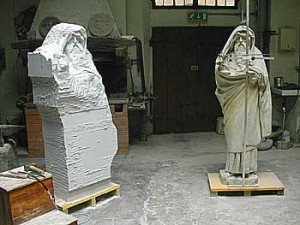
One craftsman is currently creating a copy of a six-foot statue of St. Sebastian that sat in a niche to the left of the Madonna on the façade of the cathedral. The original statue was carved in the late 1800s when the façade finally, after 400 years, was erected to hide the gray stone front wall of the church. When the copy is complete, the original will join its brethren in the museum of the Duomo and the copy will take its place high on the front of the cathedral. Most of the original statues on the façade of the cathedral and in the niches on the bell tower have been replaced with copies.
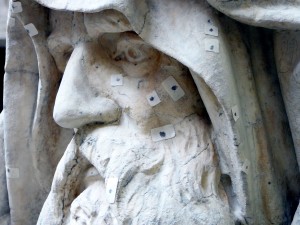
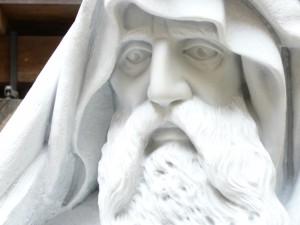
No computer helps the stone-cutter make an exact copy of the statue. The process used to make the copy is the same used by sculptors 500 years ago. Measurements are taken from the original (be it an existing marble statue or a plaster model) using a freestanding metal device that has an arm with a point that sets the distance of the stone cut and then is turned to transfer the same measurement to the new block of marble. Black dots are put on the original in the areas of finest detail so that the final cuts are accurate. The original rough shaping is done with electric tools, but the final work is done with small tools resembling dental instruments.
The bottega workmen are proud that when a pillar, stone or marble decoration or statue is replaced on the Duomo, the identical material is used, requiring the same skills and artistic sense of the original craftsmen.
